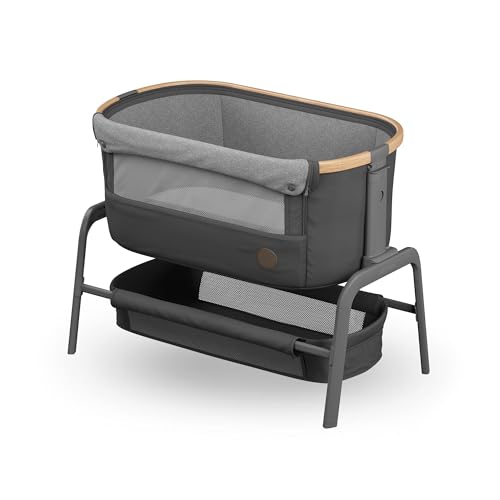Bedside Cosleeper
A bedside sleeper is attached to your adult bed. As long as you adhere to the CSPC guidelines for sleeping spaces for infants it's secure.

These guidelines are similar to crib bedding standards. Find out more about the guidelines here. When choosing a bedside sleeping device safety, comfort, and ease of use are the primary factors to consider.
Safety
Many new parents and pregnant mothers have chosen to cosleep, also known as bed-sharing, in line with the American Academy of Pediatrics recommendation that infants should be in the same room as their parents. The Academy states that room-sharing is more secure than sleeping with babies in the same bed as it reduces instances of Sudden Unexpected Death in Infancy (also known as SIDS). The AAP doesn't recommend bed sharing however, it does recommend that co-sleeping on separate sleeping surfaces is a great way to decrease the risk of SIDS. This is why the introduction of the bedside cosleeper was important to many families.
A bedside cosleeper attaches to a bed frame that is suitable for adults. It is an equivalent of a crib-style sleeper. The bedside cosleeper allows parents to keep an eye on their little one, and it gives them the ability to move around in an adult bed while keeping their baby close to them. The best cosleepers are built with high-quality materials and adhere to stringent safety standards. Be sure to look for the Juvenile Products Manufacturers Association (JPMA) stamp of approval, which demonstrates rigorous testing of the product and quality control, to ensure your child's safe cosleeping experience.
The safety of a crib is contingent on a variety of factors. It is dependent on how it's set up and secured onto the parent's mattress. It is important that the bedside cosleeper be secured to the mattress of the parent in a way that does not create gaps and spaces, where an infant could become trapped. This could pose a suffocation risk. It is crucial that the attachment system of a bedside sleeper be tested to ensure that it can withstand the forces that may be applied in the course of use, for example, a parent rolling onto and off the sleeper, or a 25-lb. The attachment system or corners of the bedside sleeper should be subjected to the horizontal force.
The standard that is voluntary for bedside sleepers incorporates by reference the federal consumer safety standard for products such as bassinets and cradles (16 CFR part 1218), which includes requirements for performance for enclosed openings made of fabric. The requirements that are mandatory in the standard also address neck and head entrapment hazards by insisting that following the application and release of 50 lbs. The standard also requires that following the application and release of 50-lb. must not be created. ASTM's electronic Reading Room offers read-only versions of the standard.
Convenience
Many parents do not allow cosleeping because they fear suffocation or SIDS or because it is a "Ferberization" that forces children to be in a room by themselves. However, anthropologists have observed for a long time that many primates, mammals, and people from other cultures sleep frequently. This may be because infants are calmed by the familiar voice of their mother, and it also helps to practice self-soothing.
The best bedside sleepers have clever designs that are attached to the sides of any mattress and can swivel so that you can access it easily for diaper changes or feedings during the middle of the night. Choose a model that has adjustable feet, which retract to accommodate different mattress sizes. It should also include ample storage space for all of your baby's essentials.
Choose a bedside sleeper which fits standard crib bedding to be used in a safe manner as your child grows. You might also consider an adjustable model that can transform into a play yard or a more deep bassinet for a long time of use, and folds easily for transport.
Portability
A bedside cosleeper that has wheels or a light base is easier to move than one with a bulky wooden frame or base. small bedside cot , HALO bassiNest essencetia, and Snoo Smart Sleeper are all portable. They come with adjustable feet that retract to accommodate platforms; legs that fold inward so that they are in close proximity to the mattress; and 100 mesh sidewalls that allow airflow without covering baby's nose or mouth.
The Arm's Reach ClearVue is an excellent choice. bedside travel cot adjusts in 1" increments and can be used as a bassinet or a portable bed. It also swivels, allowing the baby to be easily accessible so that you can soothe, nurse or check on her at night.
